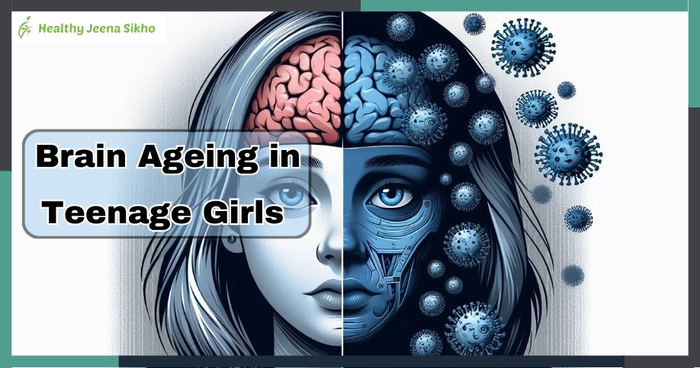The COVID-19 pandemic disrupted the lives of billions, but its impact may have been especially profound for the developing brains of teenagers. A new study published in the Proceedings of the National Academy of Sciences has found that the brains of teenage girls may have aged more rapidly during lockdowns than those of boys, highlighting the disproportionate effect of social isolation on brain development across genders.
Key Findings: Girls’ Brains Aged Faster During Lockdowns
Researchers at the University of Washington in Seattle compared MRI scans of teenagers before and after the COVID-19 lockdowns, revealing startling differences in the brain ageing process between boys and girls. According to the study, the brains of teenage girls appeared to have aged, on average, 4.2 years more than expected after the lockdowns. In contrast, the brains of boys in the same age group aged by just 1.4 years.
Prof. Patricia Kuhl, co-director of the Institute for Learning and Brain Sciences at the University of Washington, expressed her surprise at the findings, stating, "We were shocked by these data, that the difference is so dramatic."
The Brain’s Natural Thinning Process and the Pandemic’s Effect
Before the pandemic, researchers had already gathered MRI scans from 160 adolescents aged 9 to 17 to study the brain’s natural development, including cortical thinning—a process where the brain's cortex thins as part of healthy maturation. However, the post-lockdown scans collected in 2021 and 2022 from the same group of participants revealed accelerated cortical thinning, particularly in girls.
Impacted Brain Regions and Developmental Concerns
While both boys and girls showed signs of accelerated brain ageing in regions linked to vision, the girls experienced widespread changes across different brain regions. These areas included those related to social cognition, emotional processing, and language comprehension— functions that are critical for communication and interpreting social cues.
The researchers noted that cortical thinning in such areas may be linked to early-life adversity and could potentially increase the risk of neuropsychiatric disorders in the future.
Why Girls Were More Affected
The study suggests that the lack of social interaction during lockdowns may have affected girls more severely due to their greater dependence on social life for emotional and physical well-being. Prof. Kuhl emphasized this point, saying, "Girls chat endlessly and share their emotions. They are much more dependent[than boys on the social scene for their well-being and their healthy neural, physical, and emotional development."
This reliance on social interactions for healthy brain development could explain why the absence of such interactions during the pandemic may have accelerated brain ageing in girls more than in boys.
Long-Term Implications for Learning and Development
The accelerated brain ageing in teenage girls raises concerns about the long-term effects on their learning and development. Brain areas responsible for processing emotions, social interactions, and language are crucial for effective communication and understanding social cues—skills that are vital not only for academic success but also for personal development and relationships.
As researchers continue to analyze the data, the focus will likely shift to understanding how to mitigate these effects and provide support for teenagers whose brain development may have been altered by the pandemic.
Conclusion
This study sheds light on the unintended consequences of pandemic lockdowns, particularly for teenage girls. As society moves forward, addressing the emotional and cognitive needs of adolescents will be crucial in helping them recover from the disruptions caused by the pandemic.
FAQs
1. What did the study reveal about brain ageing during the pandemic?
The study found that the brains of teenage girls aged 4.2 years more than expected during the pandemic, while boys' brains aged 1.4 years more.
2. Which areas of the brain were most affected in girls?
Girls showed cortical thinning across 30 different areas, many related to social cognition, emotional processing, and language comprehension.
3. Why did girls' brains age faster than boys'?
Researchers believe that girls are more dependent on social interactions for their emotional and cognitive well-being, making the isolation during lockdowns more impactful on their brain development.
4. Will this accelerated brain ageing have long-term effects?
The long-term implications are still being studied, but premature cortical thinning could potentially increase the risk of neuropsychiatric disorders and affect learning and development.
5. How can these findings help teenagers in the future?
Understanding how the pandemic affected teenage brain development will help in creating interventions and support systems to address any developmental challenges that may arise from this period of isolation.

